- Home
- Franklin W. Dixon
A Con Artist in Paris Page 2
A Con Artist in Paris Read online
Page 2
A funny-looking tiny European car zipped into the square, and out hopped Chief Inspector Devereux, already in a well-tailored suit and on the job at the break of dawn. Devereux marched toward the outdoor security guard booth across the square, where a baffled security guard stood looking up at the sign, scratching his head.
“Je veux voir la caméra de sécurité de la Mona Lisa,”
Devereux shouted at the guard in French. “Maintenant! ”
“He’s going to look at the security footage,” one of the investigators translated. Everyone surged forward after him, eager to know what would happen next.
“Stay back!” Devereux yelled in English at the hotel guests.
They didn’t. Since both the pyramid and the security booth were outside in the public square, there was nothing Devereux could do to stop a group that large from going anywhere they wanted. About fifty pajama-clad detectives jostled for position to get a look through the security booth’s open door.
I was able to slip through the scrum right to the front of the crowd. The booth was only big enough for him and the guard to fit inside, but most of us had a clear view over Devereux’s shoulder or through the window.
The video monitor flickered to life in the security booth, flipping through different angles until it reached the display with the Mona Lisa.
And the empty frame where the most valuable painting in the world should have been.
4
NOW YOU SEE IT . . .
JOE
SO MUCH FOR THE MONA LISA being theft-proof! Her famous smile was gone right along with the rest of her.
The detectives who could see gasped in unison and passed the news along to their colleagues behind them. Chief Inspector Devereux was busy yelling a lot of unhappy-sounding things in French. The security guard yelled something else into his walkie-talkie, and a minute later another security guard appeared on camera, running into the room where the Mona Lisa was displayed.
But as soon as the guard ran past the turnstiles meant to rope the painting off from the public and stepped in front of the empty frame, the frame wasn’t empty anymore! Mademoiselle Mona Lisa had suddenly reappeared!
This time Inspector Devereux gasped right along with everyone else as the baffled security guard checked to make sure he wasn’t hallucinating. Nope. The painting really was there. Something else was there as well—a faint flicker of light on the back of the security guard’s black jacket. It didn’t take long for the news to spread.
I flashed back through the conversation Frank and I had yesterday about Le Stylo. I looked at my brother and could tell he was doing the same. Frank and I may not be twins, but we do have a brotherly connection that’s kind of uncanny sometimes.
“Big Ben!” we both blurted in unison.
Everyone turned and stared at us like we were crazy.
“It’s a 3-D projection,” I said. “Le Stylo used a trick like this to make it look like Big Ben in London had turned into a digital clock.”
Inspector Devereux peered out of the booth to give me a cold stare. “Who are you?”
Chief Olaf stepped forward in his bathrobe and replied for us before we got the chance. “Joe and Frank Hardy. Fenton Hardy’s boys.”
Devereux made a French-sounding grunt and promptly ignored us.
“There’s got to be a projector of some kind hidden in one of the poles that ropes off the painting,” Frank insisted. “You can see the image of the blank frame on the security guard’s back.”
“And there.” I pointed at the screen. I was now leaning pretty far into the booth. “See how the edges of the frame go dark when the guard moves around?”
Before Devereux could reply, the guard in the booth shouted over the walkie-talkie to the guard in the room. The guard inside turned toward the ropes and instantly had to cover his eyes. He leaned down so that he was staring straight into the black cap of the center pole.
The security guard stood up. Smiling, he held a tiny black pocket projector up to the camera. The theft of the painting was nothing but a hoax, and the Mona Lisa was right where she always had been.
There was some relieved nervous laughter from some of the detectives. Frank didn’t laugh, though, and neither did I. Le Stylo had been known to provoke the authorities before, but his stunts usually had a larger message, and this seemed like a pretty risky prank just to needle the police. What was the bigger picture?
“Everyone back to the hotel,” Devereux ordered, glaring at the crowd of half-dressed detectives. “Or I will arrest all of you for public indecency. We need to set up a crime scene, and you are simply in the way.”
The chief inspector looked directly at us when he said this last part.
“Come on, boys,” Chief Olaf encouraged, putting a hand on each of our shoulders. Neither Frank nor I budged, though. We were studying the sign on the pyramid too intently. There was the huge caricature of the Mona Lisa holding Le Stylo’s signature pen, drawn in Le Stylo’s signature style, and below that the sentence Frank had translated as, “Don’t blame me. Napoléon stole it first.”
“But Napoléon didn’t steal the Mona Lisa,” Frank said, coming to the same conclusion I had.
“I thought I told you to go back to—” Devereux started to say, but I tuned him out as I keyed in on the fountain pen in Mona Lisa’s hand.
“Um, I think there’s something else Napoléon did steal,” I said, looking over at Monsieur Plouffe, who must have had the same realization, because . . .
“Oh mon Dieu!” he blurted, and a second later he was sprinting back across the square toward the hotel, his robe billowing out behind him as he went.
“Pretending to steal the Mona Lisa wasn’t a hoax . . . ,” Frank declared.
“It was a distraction!” I finished his sentence for him and took off running after Plouffe.
The whole mob of pajamaed detectives took off after us, leaving Devereux standing at the foot of the Louvre pyramid, wondering what had just happened.
5
GOSSIPING GUMSHOES
FRANK
WE CAUGHT UP WITH PLOUFFE as he ran back inside the hotel and past the reception desk to the manager’s office, where the hotel safe was. He yanked on the locked doorknob and turned to the befuddled manager, who had just arrived for the morning shift and didn’t seem to have any idea what was going on.
“Ouvrez la porte! Ouvrez la porte! Ouvrez-la tout de suite! ” Plouffe yelled at him. I understood enough French to know Plouffe was telling him to open the door.
The manager fumbled with his keys while Plouffe bounced up and down anxiously. He shoved the manager out of the way as soon as he found the right key and flung the door open himself. He stumbled back instantly, coughing as a cloud of gray smoke billowed out.
“C’est un feu!” the manager cried.
The smoke stung my nostrils as it washed over us. Feu meant “fire,” but . . .
“It doesn’t smell like fire,” I said, covering my face with my shirt and trying to wave the smoke away.
“And I don’t see any flames,” Joe coughed.
The manager fumbled for a switch on the wall and an overhead fan whirred into motion, blowing enough of the smoke out the door for us to see inside the windowless office.
The smoke seemed to be coming up from the floor behind the antique desk on the other side of the room.
“The safe!” Plouffe moaned, running across the room with us on his heels and leaning over the desk, the color draining from his face as he stared at the floor where the safe was.
And by “was,” I mean used to be. Because the safe had been replaced by a big hole in the floor. Plouffe’s newly purchased million-dollar stylo was gone along with it, whisked away into a smoky tunnel under the hotel.
Plouffe stood there like a stunned fish, silently opening and closing his mouth, unable to speak.
“What’s below this building?” Joe asked the manager, who ran beside us and peered over the desk.
“The safe has disappeare
d into the sewers!” he gasped.
I stared down into the gaping hole. I waved away the last of the smoke wafting up from a small canister sitting in a pile of rubble on the damp tunnel floor—the smoke bomb the thief had left behind to obscure his escape route.
“Le Stylo has stolen my stylo!” Plouffe clutched his chest as if he might have a heart attack. Then he clutched me. “We must get it back!”
“I’m sorry, Monsieur Plouffe, but there are hundreds of miles of crisscrossing sewer tunnels and ancient catacombs hidden under the streets of Paris,” I coughed through my shirt. “By the time the rest of the smoke clears, the trail will be stone cold.”
The smoke remained thick in the unventilated tunnel beyond, and I figured the thief had dropped a few more smoke bombs along the way.
“Talk about a distraction,” Joe said, looking down at the rubble. “With everyone across the street gawking over the pyramid and all those fireworks and the confetti cannon going off, he would have had the time and cover he needed to bust through the floor from below without anyone hearing.”
“Get the children out of here,” Devereux’s voice growled from the doorway.
“Children?!” Joe snapped back. “I bet we’ve solved more mysteries than you have.”
I put my hand on Joe’s arm to keep him from boiling over.
“What my brother means, sir,” I backtracked, “is that we’re very familiar with Le Stylo’s MO and may be able to help piece together—”
“Help? Me?” He staggered back, hand on his chest. “Ha! Out. Now. Before I arrest you for tampering with a crime scene.”
“What are you going to do to find my pen, Inspector?” Plouffe demanded, interrupting just in time to prevent Joe from saying something we both might regret.
“There you are!” Chief Olaf exclaimed after forcing his way into the room through the throng of detectives trying to get a peek at their second crime scene of the morning. “I thought I told you two to keep a low profile.”
The chief dragged us back out into the lobby, where about fifty detectives from all over the world, most of them still in their pajamas, were rapidly trading speculations about how Le Stylo had pulled off the Louvre stunt.
“The Louvre has some of the best security in the world. How did Le Stylo manage to scale a seventy-foot-glass pyramid surrounded by cameras and drop a sign over the side without being seen?” a tall detective with a Middle Eastern accent asked.
The consensus seemed to be that no one had a clue.
“Ah! It’s the security footage from the Louvre!” a British-accented detective I’d heard people call Stucky exclaimed. “My friend on the Paris force sent it to me. They’re as clueless about what happened as we are.”
The chief tightened his grip on our arms and yanked us toward the elevator.
“Might as well share it with everyone. We’re all detectives here, and fifty heads are better than one,” we heard Stucky say behind us.
A second later phones started buzzing all over the lobby as the detectives messaged the video around. The elevator door had just dinged open when the chief’s phone buzzed as well.
“I bet that’s the video!” I said.
“Please!” Joe added as we both looked up at him with our best non-trouble-making puppy-dog eyes.
“Arghh, fine!” he relented, pulling out his phone. “But only because I want to see it too.”
We could already hear people delivering a rush of commentary as they watched the footage.
“It’s like he’s invisible. The cameras outside show nothing but a shimmer of light along the side of the glass. How is that possible?” one detective wondered.
“It’s the same from the angle inside the pyramid. It looks like there’s a patch of glass inching upward, but you’d never even notice if you weren’t specifically looking for something amiss,” added another.
“I’ve never seen anything like this,” chimed in Stucky. “Is this Le Stylo fellow a magician?”
Joe, the chief, and I stared intently at the pyramid on the screen as the footage played. The time stamp on the video said 4:30 A.M., and it was still dark. Without the fireworks illuminating the square, the whole thing was lit by the decorative glow of orange interior lights reflecting back and forth off the triangle-shaped pools surrounding the pyramid.
From the footage, it really did seem like the thief was a ghost. He looked nearly transparent. There was a shimmer of light slowly moving up the pyramid, but that was about it until a few more flashes of light twinkled off the sign as it was dropped over the other side. But you could barely see that, either.
“You can’t even see the sign, because the material’s transparent and the words and the Mona Lisa stencil are both reflective silver,” I observed. “The orange light from the glass pyramid and the pools of water just reflect right back off it like camouflage.”
A lightbulb seemed to go on over Joe’s head. “What if it wasn’t just the sign that was reflective?”
A second lightbulb suddenly went on over mine. “It wouldn’t be the first time Le Stylo used a mirror suit to climb a building unseen.”
“And with the reflection pools surrounding the glass pyramid reflecting the pyramid back at him from every angle, he would have become practically invisible,” Joe said.
The chief looked from me to Joe. “What are you boys talking about?”
By this time, some of the other detectives had begun to gather around as well.
“I guess most detectives aren’t street-art aficionados,” Joe said, looking rather smug.
“Le Stylo made a special flexible suit covered from head to toe in hundreds of tiny mirrors for a stunt in Texas last year,” I explained. “When the suit is worn against another reflective surface without anything else to break up the person’s silhouette, they blend right into the background so you almost can’t even tell they’re there.”
“Brilliant!” commented Stucky in his British accent. “But how did he climb the blasted thing in the first place? Is he Spider-Man?”
Joe smiled. “Sort of. He used suctions cups on his hands and feet to climb a glass skyscraper as part of the same Texas stunt.”
“Splendid work, chaps. It looks like the grown-ups aren’t the only detectives in the building after all,” Stucky declared. “You must go and tell the chief inspector you cracked the first part of the case.”
Both Joe and I looked at Chief Olaf, who nodded his approval. “Come on.” The chief gestured toward the inspector.
Unfortunately, Devereux was not impressed. We hadn’t even made it all the way through our theory when he cut us off. “You can leave the detecting to the professionals.”
“Now wait a second there, Inspector,” the chief jumped to our defense. “I think you should hear the boys out—”
“As I said, Mr. Olaf, leave the detecting to the professionals,” Devereux interrupted. “Now, good day.”
“It’s Chief Olaf, and you—” But the chief didn’t get a chance to finish, because Devereux simply turned his back and walked away. Chief Olaf got even redder than he does when he’s angry at us and stomped off in the opposite direction, grumbling to himself about being called unprofessional.
“I take that as the chief’s approval of our ongoing independent investigation,” Joe said, staring daggers at Devereux’s back.
“We’ll show that guy how the professionals in Bayport do it,” I concurred.
One of the things we’d learned from our dad is that a keen set of ears is often a detective’s best weapon, so I turned mine to the lobby full of IPAD investigators. The gossiping gumshoe rumor mill had continued to pick up steam, and the current topic of conversation seemed to be Le Stylo’s identity.
“I think the theory that it’s a group of different people holds the most water,” a woman with a Boston accent said. “It would explain how Le Stylo is able to pull off such complex stunts in so many different global locales.”
“My money’s on that Parisian philanthropist art collecto
r fellow, Cyril Brune,” Stucky interjected. “He’s filthy rotten rich and they say he’s one of these extreme sports daredevils, travels around the world doing daredevil stunts for fun.”
“I’ve heard the same rumors,” Joe told me with a frustrated sigh. “And there are a ton more, but there’s no real evidence for any one of them.”
“So where should we start?” I asked.
“I don’t know, but there’s one thing that’s really bugging me about this case, and I don’t mean Chief Inspector Snooty,” he said. “This crime just doesn’t fit Le Stylo’s profile.”
I looked at him skeptically. “A high-profile public stunt that provokes the authorities using the same exact technology Le Stylo has used before doesn’t fit his profile?”
“I guess,” Joe conceded. “But he’s never stolen anything before. It’s out of character. His installations usually make a comment about society or protest some kind of injustice. He’s an activist, not a thief.”
“Not until now, at least,” I pointed out.
“Yeah, I guess,” he said, looking over at Monsieur Plouffe, who sat nearby, as distraught as ever, with the phone to his ear.
“S’il vous plaît, appelez-moi immédiatement si vous entendez quelque chose de vos contacts, Simone,” he pleaded in French.
My French wasn’t good enough to pick up what he was saying, and there was too much background noise to use my translator app, but the name Simone rang a bell.
I walked over as soon as he hung up the phone.
“Excuse me, Monsieur Plouffe, but can I ask who you were speaking to?”
“The art dealer through whom I purchased Napoléon’s pen,” he said dejectedly. “I had hoped she might be able to help the police with their investigation, but she has nothing to offer besides her sympathy.”
“You said her name was Simone?” I prompted.
“Yes. Simone Lachance,” he said. “She owns a number of galleries around Paris. There’s one not far from here, I believe, but it is contemporary art, in which I have little interest.”

 The Great Pumpkin Smash
The Great Pumpkin Smash Who Let the Frogs Out?
Who Let the Frogs Out? Return to Black Bear Mountain
Return to Black Bear Mountain A Treacherous Tide
A Treacherous Tide Bug-Napped
Bug-Napped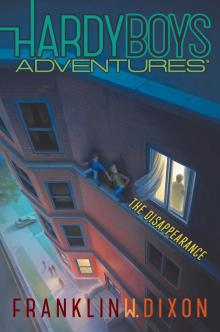 The Disappearance
The Disappearance Sea Life Secrets
Sea Life Secrets The Mystery of the Chinese Junk
The Mystery of the Chinese Junk A Skateboard Cat-astrophe
A Skateboard Cat-astrophe Too Many Traitors
Too Many Traitors Galaxy X
Galaxy X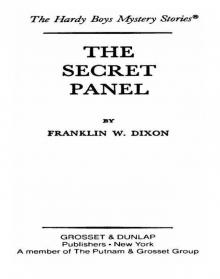 The Secret Panel
The Secret Panel The Secret of Wildcat Swamp
The Secret of Wildcat Swamp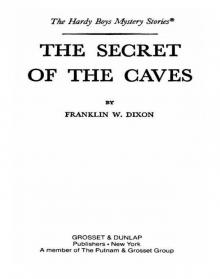 The Secret of the Caves
The Secret of the Caves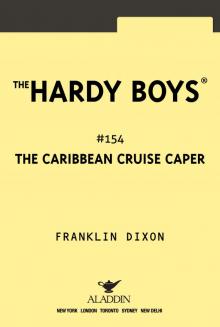 The Caribbean Cruise Caper
The Caribbean Cruise Caper Without a Trace
Without a Trace The Mystery of the Spiral Bridge
The Mystery of the Spiral Bridge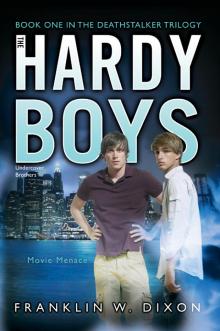 Movie Menace
Movie Menace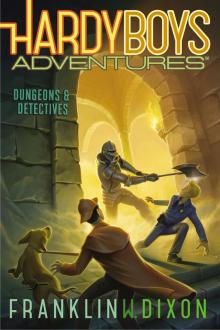 Dungeons & Detectives
Dungeons & Detectives Water-Ski Wipeout
Water-Ski Wipeout The Case of the Psychic's Vision
The Case of the Psychic's Vision X-plosion
X-plosion Deathgame
Deathgame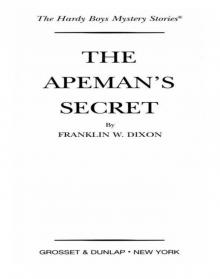 The Apeman's Secret
The Apeman's Secret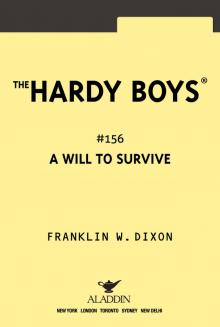 A Will to Survive
A Will to Survive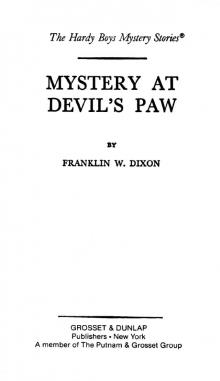 Mystery at Devil's Paw
Mystery at Devil's Paw Blood Money
Blood Money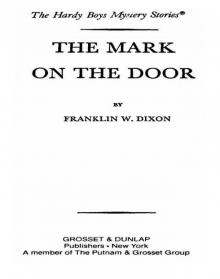 The Mark on the Door
The Mark on the Door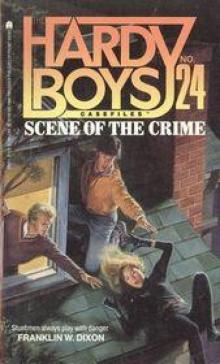 Scene of the Crime
Scene of the Crime The Gray Hunter's Revenge
The Gray Hunter's Revenge Stolen Identity
Stolen Identity The Mummy's Curse
The Mummy's Curse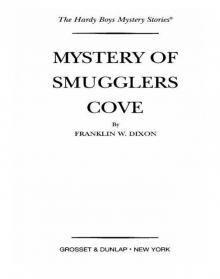 Mystery of Smugglers Cove
Mystery of Smugglers Cove Diplomatic Deceit
Diplomatic Deceit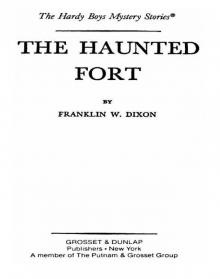 The Haunted Fort
The Haunted Fort The Crisscross Shadow
The Crisscross Shadow Secret of the Red Arrow
Secret of the Red Arrow Trial and Terror
Trial and Terror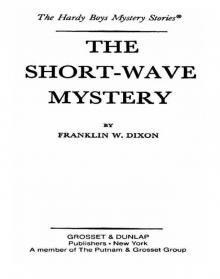 The Short-Wave Mystery
The Short-Wave Mystery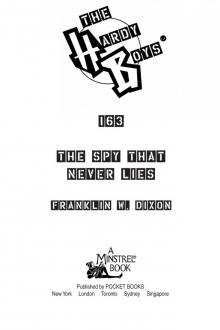 The Spy That Never Lies
The Spy That Never Lies Operation: Survival
Operation: Survival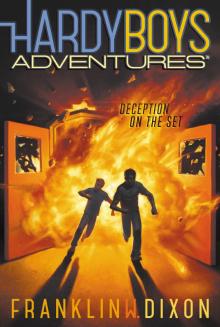 Deception on the Set
Deception on the Set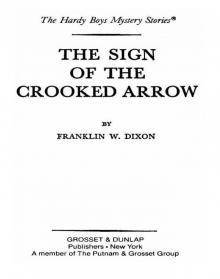 The Sign of the Crooked Arrow
The Sign of the Crooked Arrow Hunting for Hidden Gold
Hunting for Hidden Gold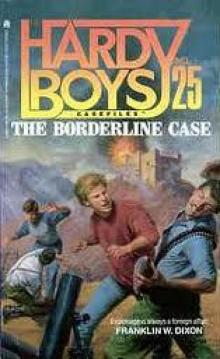 Disaster for Hire
Disaster for Hire The Clue in the Embers
The Clue in the Embers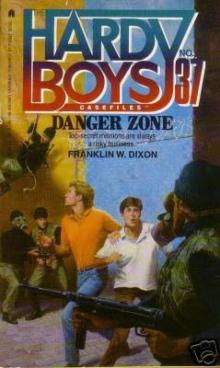 Danger Zone
Danger Zone The Hidden Harbor Mystery
The Hidden Harbor Mystery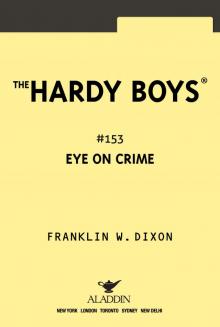 Eye on Crime
Eye on Crime A Game Called Chaos
A Game Called Chaos The Bicycle Thief
The Bicycle Thief The Missing Playbook
The Missing Playbook Survival Run
Survival Run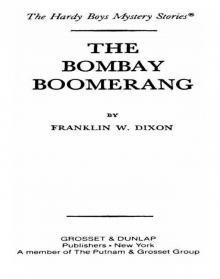 The Bombay Boomerang
The Bombay Boomerang Mystery of the Samurai Sword
Mystery of the Samurai Sword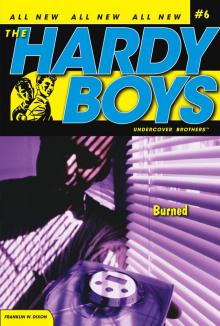 Burned
Burned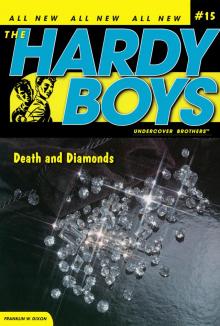 Death and Diamonds
Death and Diamonds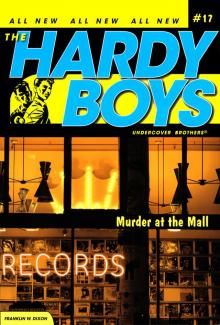 Murder at the Mall
Murder at the Mall The Prime-Time Crime
The Prime-Time Crime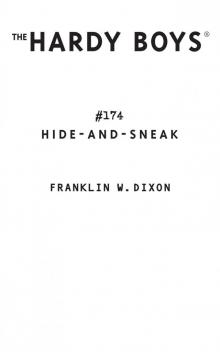 Hide-and-Sneak
Hide-and-Sneak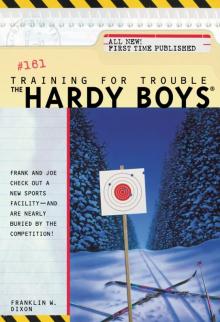 Training for Trouble
Training for Trouble Trouble in Paradise
Trouble in Paradise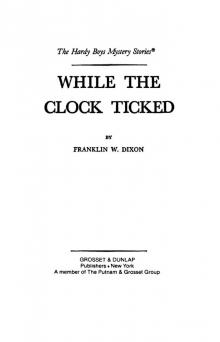 While the Clock Ticked
While the Clock Ticked The Alaskan Adventure
The Alaskan Adventure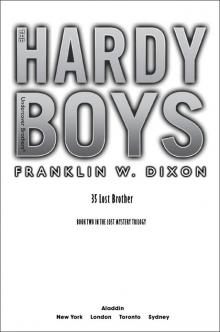 The Lost Brother
The Lost Brother Tunnel of Secrets
Tunnel of Secrets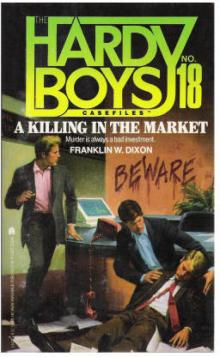 A Killing in the Market
A Killing in the Market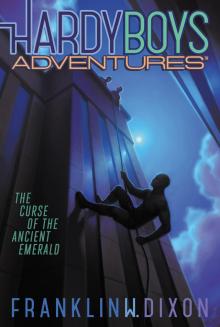 The Curse of the Ancient Emerald
The Curse of the Ancient Emerald The Arctic Patrol Mystery
The Arctic Patrol Mystery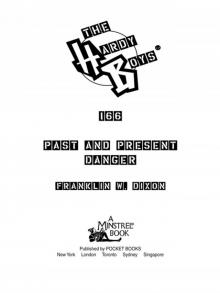 Past and Present Danger
Past and Present Danger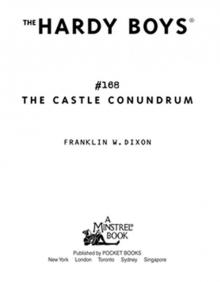 The Castle Conundrum (Hardy Boys)
The Castle Conundrum (Hardy Boys) Farming Fear
Farming Fear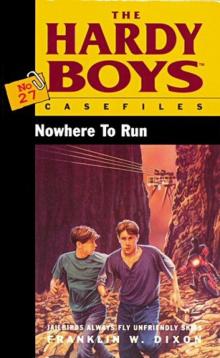 Nowhere to Run
Nowhere to Run The Secret of the Soldier's Gold
The Secret of the Soldier's Gold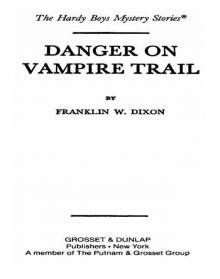 Danger on Vampire Trail
Danger on Vampire Trail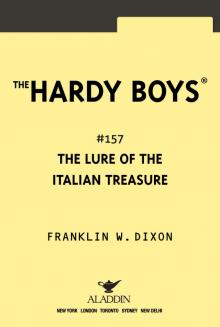 The Lure of the Italian Treasure
The Lure of the Italian Treasure The Mystery of Cabin Island
The Mystery of Cabin Island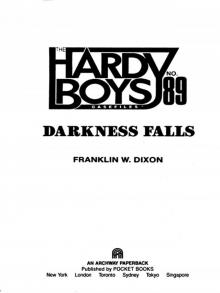 Darkness Falls
Darkness Falls Night of the Werewolf
Night of the Werewolf Danger in the Extreme
Danger in the Extreme The Lazarus Plot
The Lazarus Plot The Hooded Hawk Mystery
The Hooded Hawk Mystery Double Trouble
Double Trouble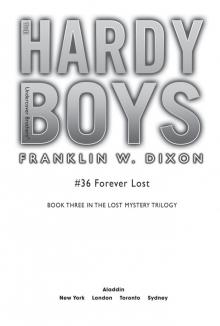 Forever Lost
Forever Lost Pushed
Pushed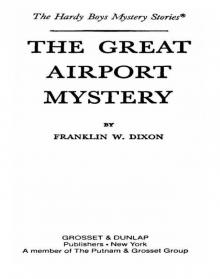 The Great Airport Mystery
The Great Airport Mystery The Hunt for Four Brothers
The Hunt for Four Brothers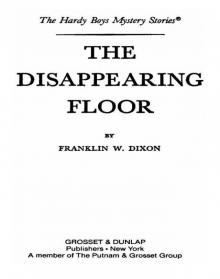 The Disappearing Floor
The Disappearing Floor Motocross Madness
Motocross Madness Foul Play
Foul Play High-Speed Showdown
High-Speed Showdown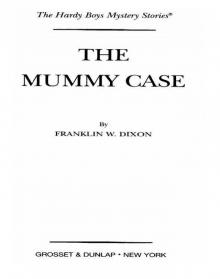 The Mummy Case
The Mummy Case The Firebird Rocket
The Firebird Rocket Trouble in Warp Space
Trouble in Warp Space Ship of Secrets
Ship of Secrets Line of Fire
Line of Fire The Clue of the Broken Blade
The Clue of the Broken Blade Medieval Upheaval
Medieval Upheaval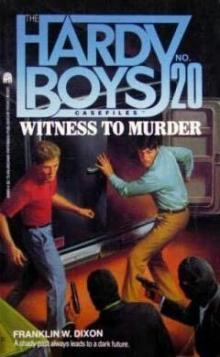 Witness to Murder
Witness to Murder The Giant Rat of Sumatra
The Giant Rat of Sumatra Attack of the Bayport Beast
Attack of the Bayport Beast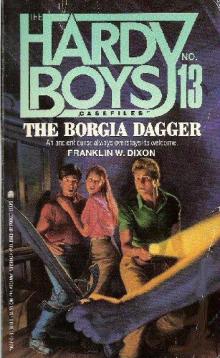 The Borgia Dagger
The Borgia Dagger Scavenger Hunt Heist
Scavenger Hunt Heist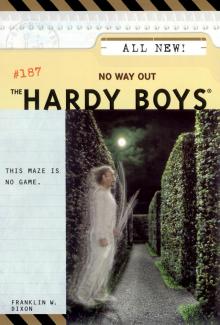 No Way Out
No Way Out Murder House
Murder House The X-Factor
The X-Factor The Desert Thieves
The Desert Thieves Mystery of the Phantom Heist
Mystery of the Phantom Heist The Battle of Bayport
The Battle of Bayport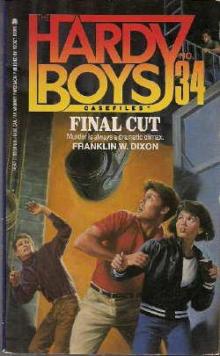 Final Cut
Final Cut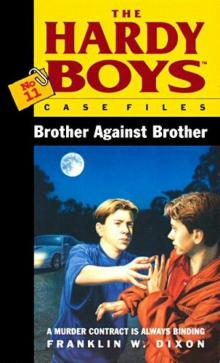 Brother Against Brother
Brother Against Brother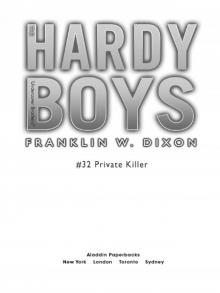 Private Killer
Private Killer The Mystery of the Black Rhino
The Mystery of the Black Rhino Feeding Frenzy
Feeding Frenzy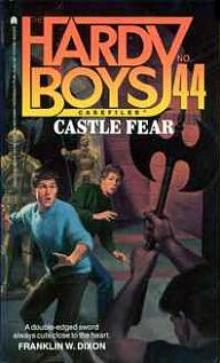 Castle Fear
Castle Fear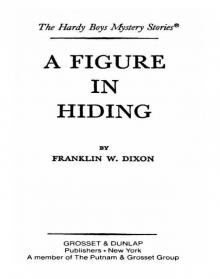 A Figure in Hiding
A Figure in Hiding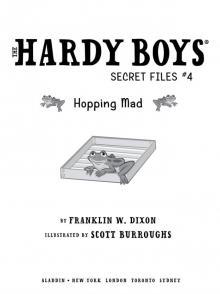 Hopping Mad
Hopping Mad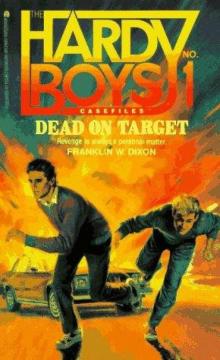 Dead on Target
Dead on Target Skin and Bones
Skin and Bones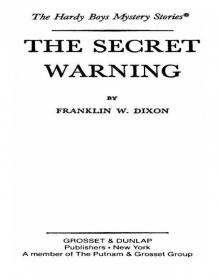 The Secret Warning
The Secret Warning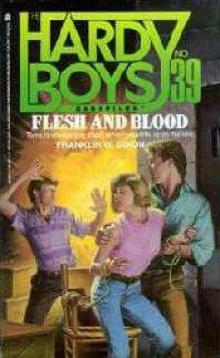 Flesh and Blood
Flesh and Blood The Shattered Helmet
The Shattered Helmet Boardwalk Bust
Boardwalk Bust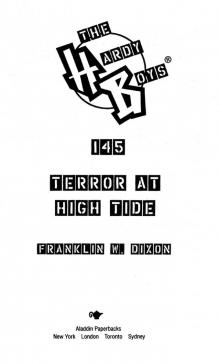 Terror at High Tide
Terror at High Tide In Plane Sight
In Plane Sight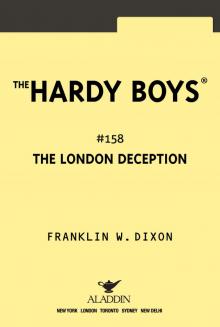 The London Deception
The London Deception Evil, Inc.
Evil, Inc. Deprivation House
Deprivation House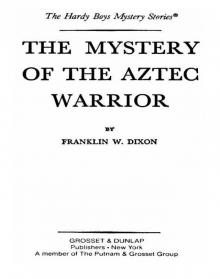 The Mystery of the Aztec Warrior
The Mystery of the Aztec Warrior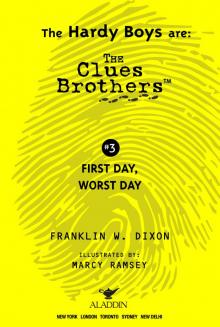 First Day, Worst Day
First Day, Worst Day Bonfire Masquerade
Bonfire Masquerade Killer Connections
Killer Connections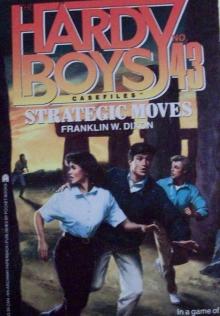 Strategic Moves
Strategic Moves Warehouse Rumble
Warehouse Rumble The Chase for the Mystery Twister
The Chase for the Mystery Twister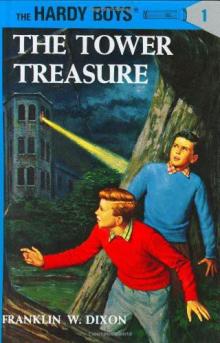 The Tower Treasure thb-1
The Tower Treasure thb-1 The Children of the Lost
The Children of the Lost The Last Laugh
The Last Laugh Trick-or-Trouble
Trick-or-Trouble Perfect Getaway
Perfect Getaway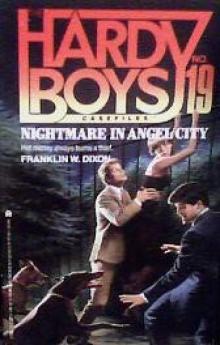 Nightmare in Angel City
Nightmare in Angel City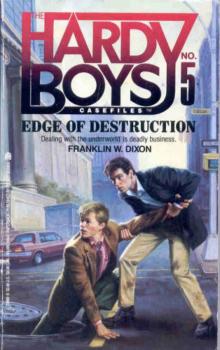 Edge of Destruction
Edge of Destruction Fright Wave
Fright Wave The Jungle Pyramid
The Jungle Pyramid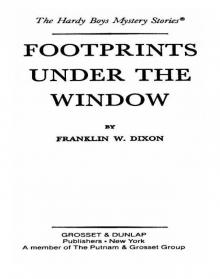 Footprints Under the Window
Footprints Under the Window The Gross Ghost Mystery
The Gross Ghost Mystery A Monster of a Mystery
A Monster of a Mystery House Arrest
House Arrest Mystery of the Desert Giant
Mystery of the Desert Giant Talent Show Tricks
Talent Show Tricks The Sting of the Scorpion
The Sting of the Scorpion The Secret of Skull Mountain
The Secret of Skull Mountain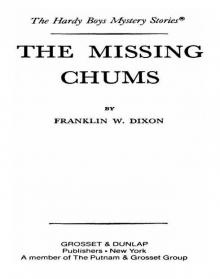 The Missing Chums
The Missing Chums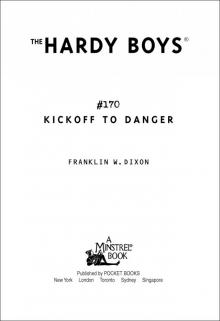 Kickoff to Danger
Kickoff to Danger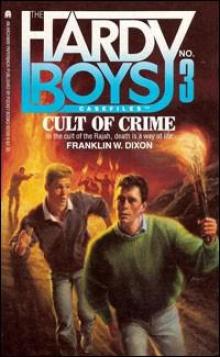 Cult of Crime
Cult of Crime Running on Fumes
Running on Fumes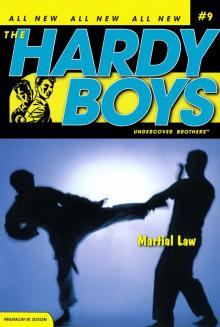 Martial Law
Martial Law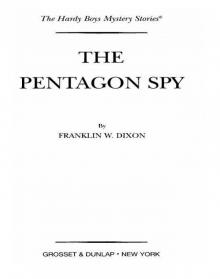 The Pentagon Spy
The Pentagon Spy Hazed
Hazed The Secret Agent on Flight 101
The Secret Agent on Flight 101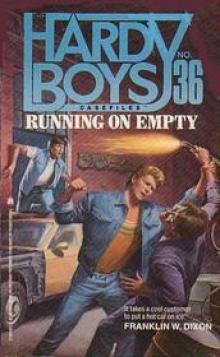 Running on Empty
Running on Empty Top Ten Ways to Die
Top Ten Ways to Die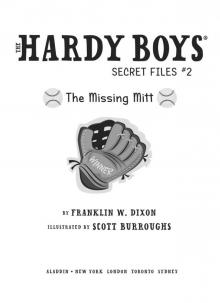 The Missing Mitt
The Missing Mitt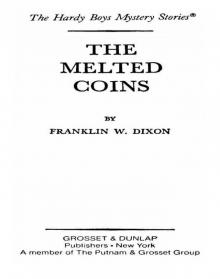 The Melted Coins
The Melted Coins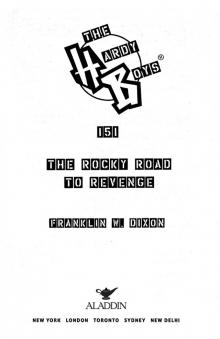 The Rocky Road to Revenge
The Rocky Road to Revenge The Masked Monkey
The Masked Monkey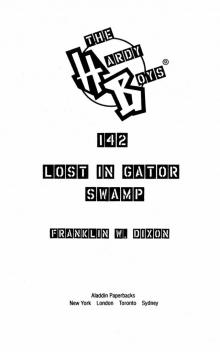 Lost in Gator Swamp
Lost in Gator Swamp Extreme Danger
Extreme Danger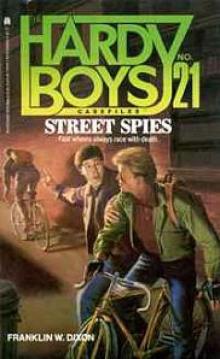 Street Spies
Street Spies The Wailing Siren Mystery
The Wailing Siren Mystery The Dangerous Transmission
The Dangerous Transmission Hurricane Joe
Hurricane Joe The Crisscross Crime
The Crisscross Crime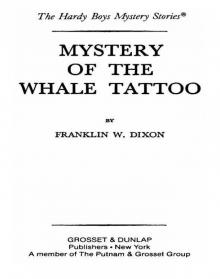 Mystery of the Whale Tattoo
Mystery of the Whale Tattoo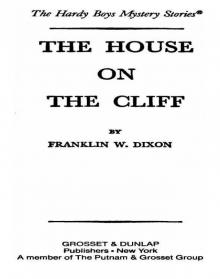 The House on the Cliff
The House on the Cliff Camping Chaos
Camping Chaos Ghost of a Chance
Ghost of a Chance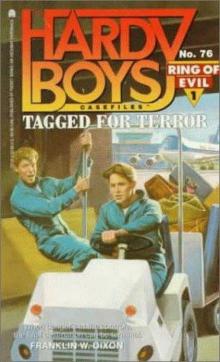 Tagged for Terror
Tagged for Terror Thrill Ride
Thrill Ride Fossil Frenzy
Fossil Frenzy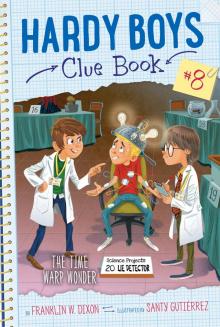 The Time Warp Wonder
The Time Warp Wonder Ghost Stories
Ghost Stories Speed Times Five
Speed Times Five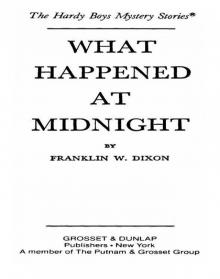 What Happened at Midnight
What Happened at Midnight Three-Ring Terror
Three-Ring Terror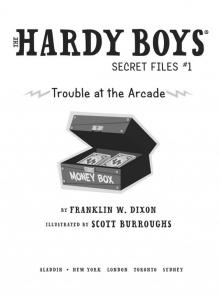 Trouble at the Arcade
Trouble at the Arcade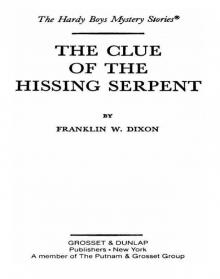 The Clue of the Hissing Serpent
The Clue of the Hissing Serpent Trouble in the Pipeline
Trouble in the Pipeline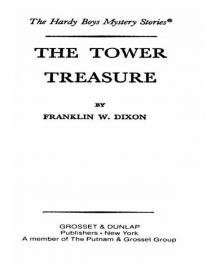 The Tower Treasure
The Tower Treasure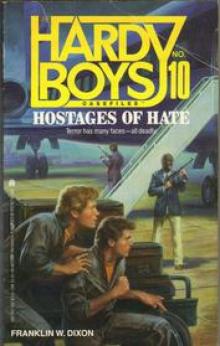 Hostages of Hate
Hostages of Hate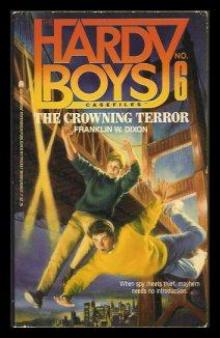 The Crowning Terror
The Crowning Terror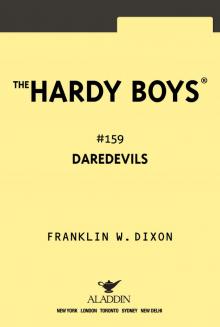 Daredevils
Daredevils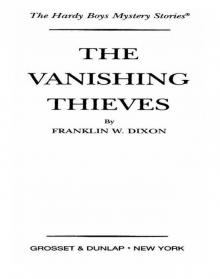 The Vanishing Thieves
The Vanishing Thieves Killer Mission
Killer Mission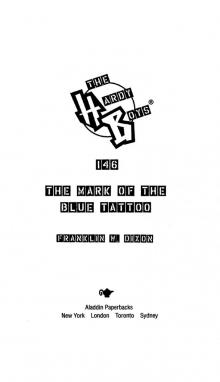 The Mark of the Blue Tattoo
The Mark of the Blue Tattoo The Witchmaster's Key
The Witchmaster's Key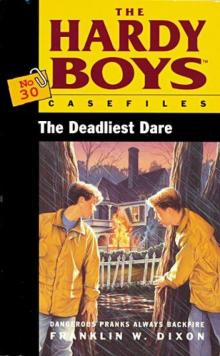 The Deadliest Dare
The Deadliest Dare Peril at Granite Peak
Peril at Granite Peak The Secret Of The Old Mill thb-3
The Secret Of The Old Mill thb-3 Rocky Road
Rocky Road The Demolition Mission
The Demolition Mission Blown Away
Blown Away Passport to Danger
Passport to Danger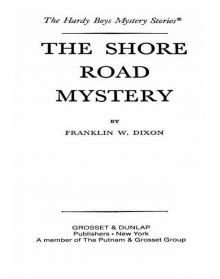 The Shore Road Mystery
The Shore Road Mystery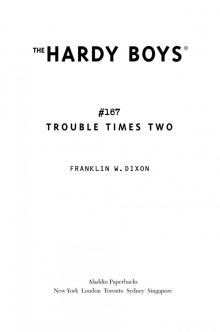 Trouble Times Two
Trouble Times Two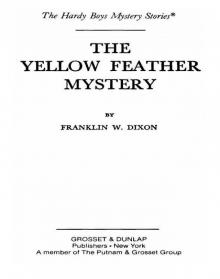 The Yellow Feather Mystery
The Yellow Feather Mystery One False Step
One False Step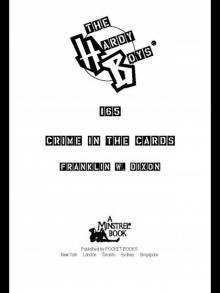 Crime in the Cards
Crime in the Cards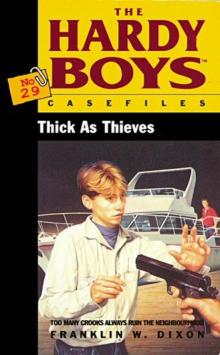 Thick as Thieves
Thick as Thieves The Clue of the Screeching Owl
The Clue of the Screeching Owl The Pacific Conspiracy
The Pacific Conspiracy The Genius Thieves
The Genius Thieves The Flickering Torch Mystery
The Flickering Torch Mystery Into Thin Air
Into Thin Air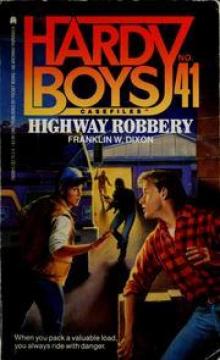 Highway Robbery
Highway Robbery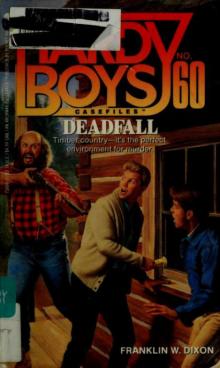 Deadfall
Deadfall Mystery of the Flying Express
Mystery of the Flying Express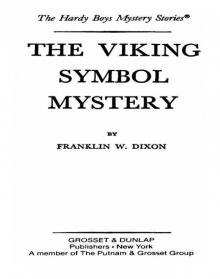 The Viking Symbol Mystery
The Viking Symbol Mystery The End of the Trail
The End of the Trail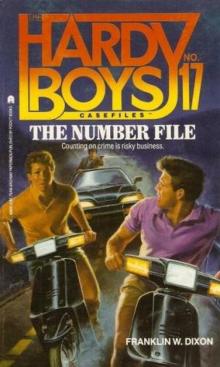 The Number File
The Number File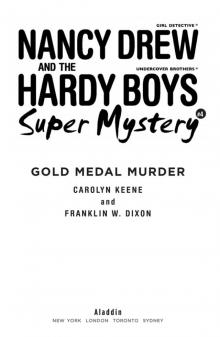 Gold Medal Murder
Gold Medal Murder Bound for Danger
Bound for Danger Collision Course
Collision Course The Madman of Black Bear Mountain
The Madman of Black Bear Mountain The Secret of the Lost Tunnel
The Secret of the Lost Tunnel The Stone Idol
The Stone Idol The Secret of Pirates' Hill
The Secret of Pirates' Hill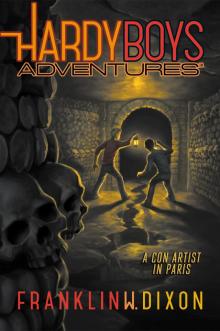 A Con Artist in Paris
A Con Artist in Paris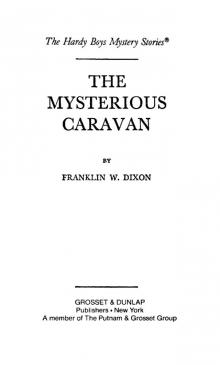 The Mysterious Caravan
The Mysterious Caravan The Secret of Sigma Seven
The Secret of Sigma Seven The Twisted Claw
The Twisted Claw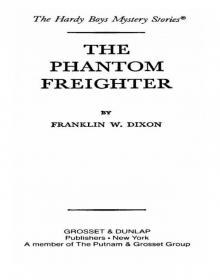 The Phantom Freighter
The Phantom Freighter The Dead Season
The Dead Season The Video Game Bandit
The Video Game Bandit The Vanishing Game
The Vanishing Game Typhoon Island
Typhoon Island